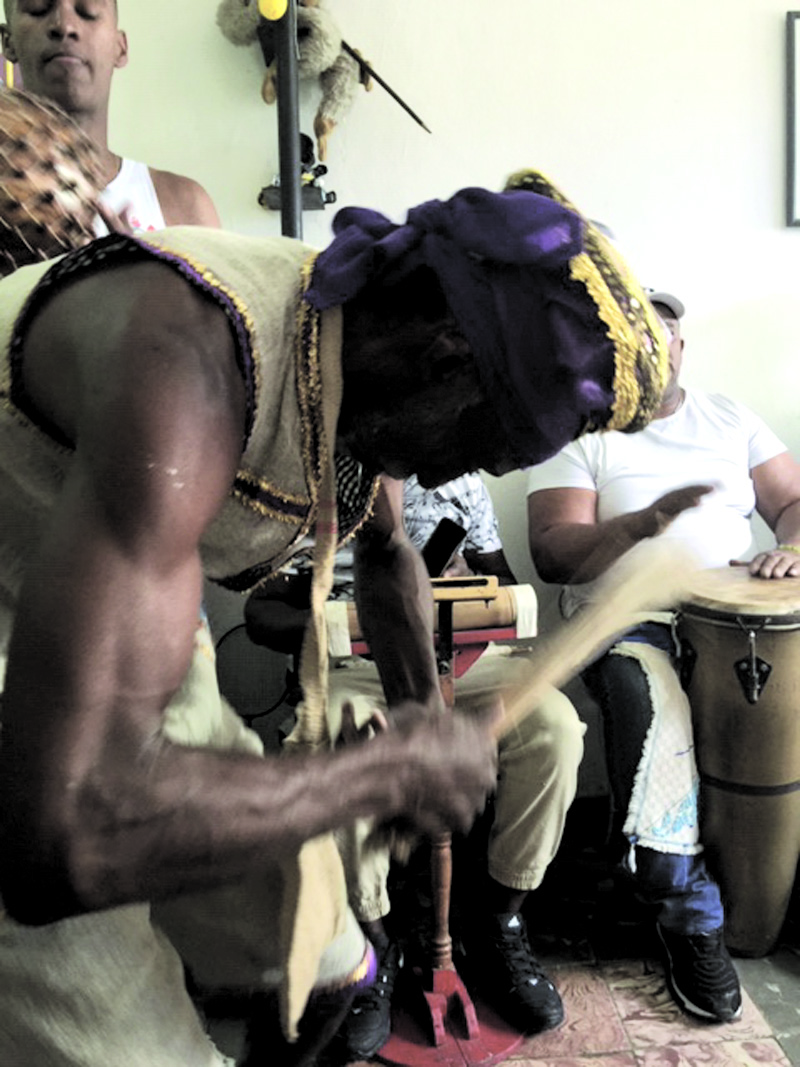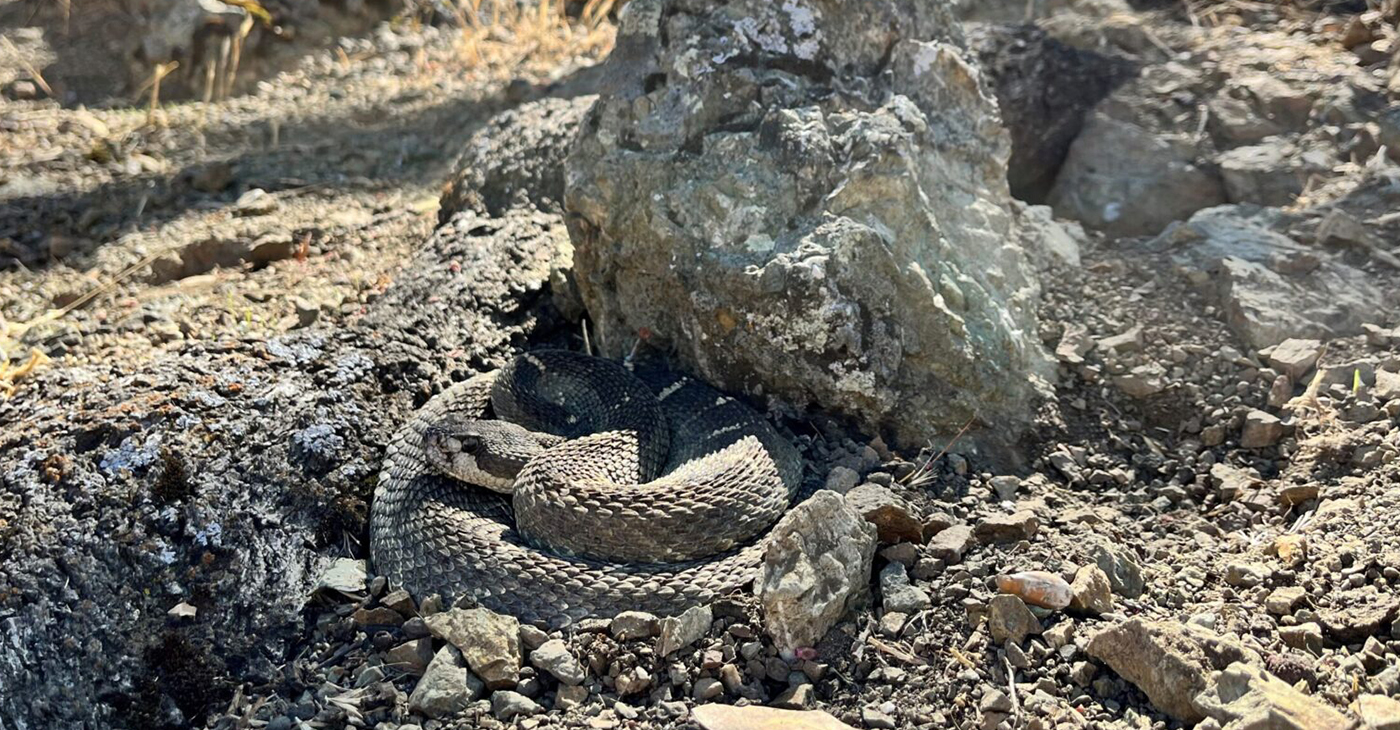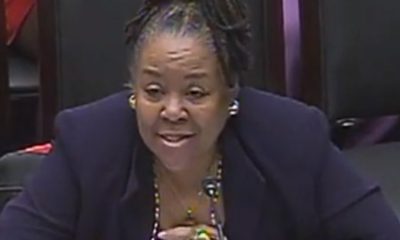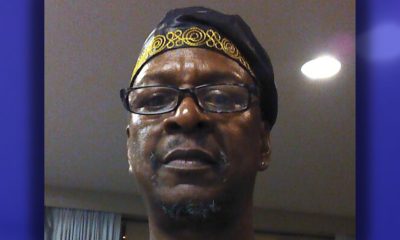Bay Area
Practitioners of African Traditional Spirituality Put Most Observations on Hold During COVID-19 Pandemic

As the faithful of the Abrahamic traditions world over have been grappling with the impact of the COVID0-19 pandemic on their religious observances—Passover, Easter and Ramadan – so, too, have practitioners of African Traditional Religion.
The observances of ATR don’t depend as much on a fixed calendar although there are such. But for the most part, traditionalists heed the prognostications of their diviners who determine the outlook over a particular geographical area and/or faithful who may be far from home.
From Nigeria to the Caribbean to the Americas, an epidemic had been foretold.
African Americans apprehend the observances through two major avenues of tradition: that of the Cuban derivation, called Lucumi (derogatorily as Santeria) and Isese, of direct Nigerian tradition.
Both would agree that whatever is ordinarily done in this season has been superseded by the pandemic’s immediate threat of disease and death. For the Cubans, the ‘Letra del Ano” or reading of the year, a divination session conducted on Jan. 1, 2020, by luminaries in Cuba’s Ifa tradition is proving prescient, not just for Cuba but the world. Proliferacion de Epidemicas debido a la mala hygiene y la indiscipline social, it read. Proliferation of epidemics because of bad hygiene and failure of social discipline.
Fully six months earlier, at the beginning of the year for Nigeria, the diviners’ prediction from June 2, 2019, in the holy city of Ile Ife, also indicated that epidemics could happen because of bad hygiene.
In both Lucumi and Isese, adherents generally appeal to the forces of nature (water, wind, fire, earth and all in those domains) on the planet as spiritual beings endowed with consciousness.
Right now, they are petitioning Olodumare (almighty God, owner of the day) in general and Babaluaiye (Father of the Hot Earth) as well as the memory of their beloved ancestors.
Babaluaiye is the force of sickness, acknowledged for the power of devastation to humanity through disease. In Nigeria, he became associated with the hot earth because sickness came during the hot dry season. He is further associated with ancestors and the force of death because of the burials of the dead.
One of Babaluaiye’s apataki, or myths, is that when he was on the road, during that hot, dry season, people hid in their homes until he passed by. Where disease had overcome a village, survivors hid in the forests. In other words, social distancing.
Among the Lucumi in the United States, social distancing seems to be the order of the day. “This is having a big impact on us,” said Nelson Rodriguez, a renowned Oriate (master of ritual initiations) who lives on the seventh floor of a large apartment building in New York’s hot zone, the Bronx.
Normally he travels to California, Puerto Rico, Florida and Cuba to conduct initiations but he hasn’t left his house since the shelter-in-place order in March. In his late 60s, he’s diabetic and a former smoker, a virtual poster child of a pandemic victim.
He asked a friend to take his dog because he can’t risk walking him in his neighborhood where it is clear, looking on the crowds below his seventh floor balcony, that too many people are ignoring Gov. Andrew Cuomo’s directive.
Even when he is not traveling, Rodriguez is accustomed to attending drum ceremonies that typically involve 50 people or more and doing what ordinary priests do: one-on-one divinations and prayer sessions called misas.
Instead, he is conducting a course on divination for his students through Zoom.
Among Isese in the United States and in Africa, such strict adherence to social distancing doesn’t appear to be as rigid among practitioners, perhaps because a lot of their stateside leadership is in Georgia and South Carolina. Diviners are working hard, determining what prayers and offerings should be done at this time to both lessen the impact on human beings and to calm the Earth itself.
Debunking conspiracy theories, Araba Awodiran Agboola says “The virus originated in nature,” and is a response to violations of nature by human beings. “Nature is present to correct the behavior.”
Willie Ramos, Lucumi organizer of Oloshas United, a federation of priests and priestesses all over the United States, has called for a nationwide moratorium on rituals except in life-or-death situations and pre-burial rituals called Etutu. Not knowing how long the health crisis will last, he believes that adherents may have to figure some things out that may change ritual to accommodate the times we live in.
All members of the faith are wondering how this can be done given that rituals require in-person touch and presence. The HIV-AIDS crisis of the 1980s changed some ritual procedures but because COVID-19 transmits so easily much more care must be taken.
Lucumi practitioners in Philadelphia realize the dangers to themselves, but have started taking steps to make sure their brothers and sisters in the faith who pass away from the virus are properly buried.
And some Lucumi practitioners in Georgia with members flung across the country were advised to stand down on ritual at least until October.
Internet conversations among the faithful seem to agree that the pandemic is caused by violations to the Earth. Over the last 200 years, the exploitation of resources has been rampant with a visible impact on our ecosystem.
One comment circulating on Facebook reads that through the pandemic, ‘nature has sent us to our room’ for a time-out.
And perhaps that is a good thing.
Ifadunke Olayemi, who specializes in appeasement to the ancestors, says she is particularly attuned to water at this time. She uses a vessel of water to meditate and then pours it outside, especially at the roots of trees.
There are posts remarking on the return of wild animals to places where humans have become scarce: beaches, forests, even some paved roads.
The absence of cars has cleared polluted air in the skies in Los Angeles, New Delhi and, of course New York.
From his balcony, Rodriguez, a native of Puerto Rico, is doing something he never could before in his many years in the Bronx: take a deep, refreshing breath.
Activism
S.F. Black Leaders Rally to Protest, Discuss ‘Epidemic’ of Racial Slurs Against Black Students in SF Public School System
Parents at the meeting spoke of their children as no longer feeling safe in school because of bullying and discrimination. Parents also said that reported incidents such as racial slurs and intimidation are not dealt with to their satisfaction and feel ignored.

By Carla Thomas
San Francisco’s Third Baptist Church hosted a rally and meeting Sunday to discuss hatred toward African American students of the San Francisco Unified School District (SFUSD).
Rev. Amos C. Brown, president of the San Francisco NAACP and pastor of Third Baptist Church, along with leadership from local civil rights groups, the city’s faith-based community and Black community leadership convened at the church.
“There has been an epidemic of racial slurs and mistreatment of Black children in our public schools in the city,” said Brown. “This will not be tolerated.”
According to civil rights advocate Mattie Scott, students from elementary to high school have reported an extraordinary amount of racial slurs directed at them.
“There is a surge of overt racism in the schools, and our children should not be subjected to this,” said Scott. “Students are in school to learn, develop, and grow, not be hated on,” said Scott. “The parents of the children feel they have not received the support necessary to protect their children.”
Attendees were briefed last Friday in a meeting with SFUSD Superintendent Dr. Matt Wayne.
SFUSD states that their policies protect children and they are not at liberty to publicly discuss the issues to protect the children’s privacy.
Parents at the meeting spoke of their children as no longer feeling safe in school because of bullying and discrimination. Parents also said that reported incidents such as racial slurs and intimidation are not dealt with to their satisfaction and feel ignored.
Some parents said they have removed their students from school while other parents and community leaders called on the removal of the SFUSD superintendent, the firing of certain school principals and the need for more supportive school board members.
Community advocates discussed boycotting the schools and creating Freedom Schools led by Black leaders and educators, reassuring parents that their child’s wellbeing and education are the highest priority and youth are not to be disrupted by racism or policies that don’t support them.
Virginia Marshall, chair of the San Francisco NAACP’s education committee, offered encouragement to the parents and students in attendance while also announcing an upcoming May 14 school board meeting to demand accountability over their mistreatment.
“I’m urging anyone that cares about our students to pack the May 14 school board meeting,” said Marshall.
This resource was supported in whole or in part by funding provided by the State of California, administered by the California State Library via California Black Media as part of the Stop the Hate Program. The program is supported by partnership with California Department of Social Services and the California Commission on Asian and Pacific Islander American Affairs as part of the Stop the Hate program. To report a hate incident or hate crime and get support, go to CA vs Hate.
Bay Area
Mayor London Breed: State Awards San Francisco Over $37M for Affordable Housing
On April 30, Mayor London N. Breed announced San Francisco has been awarded more than $37.9 million in funding from the California Department of Housing and Community Development (HCD) as part of the State’s Multifamily Housing Program (MHP). The HCD loan will provide the final funding necessary for development of Casa Adelante – 1515 South Van Ness, a 168-unit affordable housing project located in San Francisco’s Mission District.

By Oakland Post Staff
On April 30, Mayor London N. Breed announced San Francisco has been awarded more than $37.9 million in funding from the California Department of Housing and Community Development (HCD) as part of the State’s Multifamily Housing Program (MHP).
The HCD loan will provide the final funding necessary for development of Casa Adelante – 1515 South Van Ness, a 168-unit affordable housing project located in San Francisco’s Mission District.
The new development at 1515 South Van Ness Ave. will provide 168 affordable homes to low-income families, formerly homeless families, and persons living with HIV earning between 25-80% of the San Francisco Area Median Income (AMI).
In addition, the project is anticipated to provide family-friendly amenities and ground floor community-serving commercial spaces that preserve the prevailing neighborhood character of the Calle 24 Latino Cultural District.
“This funding unlocks our ability to move on building affordable housing units for families in San Francisco at a crucial time. We understand the level of need for more housing that is accessible, and like the state, the city continues to face a challenging budget cycle,” said Breed. “1515 South Van Ness is a good example of what can be achieved in San Francisco when you have strong community partnerships and an unwavering commitment to deliver on critical needs for our residents.”
“From the beginning of my term as Supervisor, I have fought to bring affordable housing to 1515 South Van Ness” said Supervisor Hillary Ronen. “In the interim, the site has been utilized for homeless services and shelter, and I am thrilled that HCD has recognized the value of this development, and we are finally ready to break ground and bring 168 affordable homes to low income and formerly homeless families in the Mission.”
Owned and occupied by McMillan Electric Company until 2015, the City and County of San Francisco purchased 1515 South Van Ness Avenue in June 2019 with the intent of developing new affordable housing.
In November 2020, the San Francisco Mayor’s Office of Housing and Community Development (MOHCD) released a Multi-site Request for Qualifications (RFQ) seeking qualified developers to build affordable housing on the site, and subsequently selected Chinatown Community Development Corporation (CCDC) and Mission Economic Development Agency (MEDA) in May 2021 to develop the site.
The project is expected to begin construction in winter 2025.
“A strong, long-term push by Mission advocates to make this site 100% affordable is now paying off, with 168 family units that include services and childcare. People of color communities know what they need, and we are excited to be in partnership with a team, consisting of MEDA, CCDC, and MOHCD, that listens,” said Malcolm Yeung, Executive Director at CCDC.
“We are excited to be in partnership with CCDC, yet again, and for the opportunity to develop intergenerational affordable housing in the City’s Mission District,” said Luis Granados, executive director at MEDA.
Increasing housing affordable to lower-income and vulnerable residents is a key priority in the City’s Housing Element which calls for additional funding for affordable housing production and preservation, as well as Mayor Breed’s Housing for All Executive Directive that sets out the steps the City will take to meet the bold goal of allowing for 82,000 new homes to be built over the next eight years.
Tuesday’s funding announcement emphasizes the importance of regional and state collaboration in order to reach our housing and climate goals.
“We are thrilled—not just to bring a project of this size to a community with great need — but to do so with community-based developers and their partners who understand the neighborhood and sensitivities around cultural preservation,” said HCD Director Gustavo Velasquez.
Bay Area
East Bay Regional Park District Issues Rattlesnake Advisory
The East Bay Regional Park District released an advisory today on rattlesnakes, which emerge from winter hibernation in early spring and become more active. Warm weather can bring more potential for rattlesnake encounters with humans and dogs, particularly along trails and roads.

The Richmond Standard
The East Bay Regional Park District released an advisory today on rattlesnakes, which emerge from winter hibernation in early spring and become more active.
Warm weather can bring more potential for rattlesnake encounters with humans and dogs, particularly along trails and roads.
Visitors are encouraged to avoid hiking alone in case of an emergency, to scan the ground ahead as they walk, jog or ride, stay on trails avoiding tall grass, and to look carefully around and under logs and rocks before sitting down. Keep your dog on your leash to be extra safe, park officials said.
If you encounter a rattlesnake, leave it alone – it is unlawful to capture or harm one. Move carefully and slowly away or around it and give it plenty of space, park officials said.
Those who are bitten by a rattlesnake are instructed to stay calm by lying down with the affected limb lower than the heart, then having someone call 911.
Getting medical attention is critical.
Those bitten should not use tourniquets, “sucking,” or snake bite kits. If you are by yourself, walk calmly to the nearest source of help to dial 911, do not run.
If bitten by any other type of snake, wash the wound with soap and water or an antiseptic and seek medical attention.
Not sure what bit you? Check the bite for two puncture marks (in rare cases one) associated with intense, burning pain, which is typical of a rattlesnake bite. Other snakebites can leave marks without associated burning pain.
The Northern Pacific rattlesnake is the species found in East Bay Regional Parks. Snakes are important to the natural environment, helping to control rodents and other reptile populations. But enjoy them from afar.
For more information, download the Park District’s Common Snakes brochure or watch our Gopher Snake or Rattlesnake video to learn how to tell the difference between rattlesnakes and gopher snakes. Additional information is available at ebparks.org/safety/wildlife-encounters.
-

 Community3 weeks ago
Community3 weeks agoFinancial Assistance Bill for Descendants of Enslaved Persons to Help Them Purchase, Own, or Maintain a Home
-

 City Government4 days ago
City Government4 days agoCourt Throws Out Law That Allowed Californians to Build Duplexes, Triplexes and RDUs on Their Properties
-

 Business3 weeks ago
Business3 weeks agoV.P. Kamala Harris: Americans With Criminal Records Will Soon Be Eligible for SBA Loans
-

 Activism4 weeks ago
Activism4 weeks agoOakland Post: Week of April 10 – 16, 2024
-

 Activism2 weeks ago
Activism2 weeks agoOakland Post: Week of April 24 – 30, 2024
-

 Community3 weeks ago
Community3 weeks agoAG Bonta Says Oakland School Leaders Should Comply with State Laws to Avoid ‘Disparate Harm’ When Closing or Merging Schools
-

 Community3 weeks ago
Community3 weeks agoRichmond Nonprofit Helps Ex-Felons Get Back on Their Feet
-

 Community3 weeks ago
Community3 weeks agoOakland WNBA Player to be Inducted Into Hall of Fame
























































